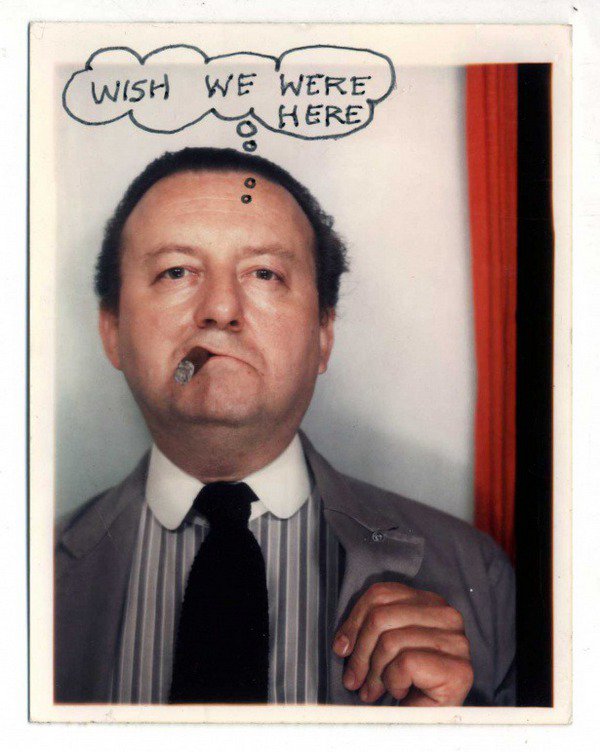Three exhibitions
dal 3/3/2011 al 27/3/2011
Segnalato da
3/3/2011
Three exhibitions
AA - Architectural Association School of Architecture, London
"Wish We Were Here: Cedric Price Mental Notes", the films and drawings from Price's personal notebooks that appear in the exhibition present him doing what he did best over a period of 40 years: constantly challenging our understanding of what architecture might be. Over 3 weeks, "Ecclesial Anatomies" transforms the AA Bar into a menagerie of organs - bodily compositions and voluptuous baroque curvatures set within the context of London's churches. "Going Back to Greenville": Greenville, Mississippi is the Queen City of the Delta. It's also the third most dangerous city in the United States...

Wish We Were Here: Cedric Price Mental Notes
Curated by Samantha Hardingham and Hans Ulrich Obrist
AA Front Members' Room
05.03.2011 - 26.03.2011
Wish We Were Here is a touring exhibition curated by Samantha Hardingham and Hans Ulrich Obrist. It is in part a restaging of VENIC VENIC made for the 12th International Architecture Exhibition, ‘People Meet in Architecture’, Venice Biennale 2010 directed by Kazuyo Sejima and with thanks to Paolo Baratta, President of the Fondazione La Biennale di Venezia. VENIC VENIC was made possible by the additional support of the Institute of the 21st Century: Bettina Korek, Karen Marta and Justin Conner and that institute’s fiscal sponsor, Pasadena Arts Council.
Wish We Were Here is made in collaboration with AA Photo Library and AA Archives; The Cedric Price Estate; The Canadian Centre for Architecture, Montreal; Jan Nauta and Scrap Marshall (POA); sculptors Gary Woodley and Gavin Weber; and the students of the Hochschule für Gestaltung Karlsruhe (HfG); Kilian Fabich and Stella-Sophie Seroglou, supervised by Wilfried Kühn, Armin Linke and Markus Miessen.
'Philosopher, sir?’
‘An observer of human nature, sir’, said Mr Pickwick
The Pickwick Papers or The Posthumous Papers of the Pickwick
Club by Charles Dickens*
Cedric Price (1934–2003) was an architect, thinker and above all an Englishman of extraordinary generosity towards his subject. He had an independence of mind the like of which can only come from a fondness for humans and a fascination for human nature. For Price, the moral and ethical principles implied in any design speculation are privileged over and above variations on the artefactual by-product. In this respect the role of the many rich collaborations over his lifetime, conversations and talks amongst audiences, engaging with the media as a means of initiating discussion, and the more personal dialogue presented in his notebooks were all critical in developing his design thinking on the themes of participation, anticipation, indeterminacy and delight. The films and drawings from Price’s personal notebooks that appear in the exhibition present Price doing what he did best over a period of 40 years – constantly challenging our understanding of what architecture might be, in discussions with students, colleagues, strangers and himself.
* a CP favourite – he held 16 copies in his library at home, with one copy especially reserved for travelling.
----
Ecclesial Anatomies
AA Bar 05.03.2011 - 26.03.2011
Over three weeks, Ecclesial Anatomies transforms the AA Bar into a menagerie of organs – bodily compositions and voluptuous baroque curvatures set within the context of London’s churches. The exhibition showcases work by several students in the Media Studies course of the same title, and is based on the amalgamation of ideas of embodiment, scale, tectonics and ornamentation in the masterworks of Sir Christopher Wren and Magnetic Resonance Imaging.
Embedded within an architecture that is simultaneously exuberantly ornamental and concisely virtual, the work encompasses a fusion of voxel-based, inside-out medical approaches in virtual environments within the traditional Euclidean geometries of the great churches of London, while at the same time condensing narration, ornament and an exuberant affinity for kitsch.
----
Going Back to Greenville
Back Members' Room 05.03.2011 - 28.03.2011
Greenville, Mississippi is the Queen City of the Delta. It’s also the third most dangerous city in the United States, with a homicide rate as extreme as the other major cities along the Mississippi River – St Louis, Memphis and New Orleans.
Naturally, no image can truly convey the sense of threat and destitution that marks Greenville. And our aestheticised familiarity with the fading signs that line Washington Avenue – Rapid Finance Loans, Fine Vines Inc (Manufacturers of Quality Jeans), Delta Teaching Supplies, the Paramount Music Theater – only provides a brief distraction from the less familiar sight of an entire mainstreet consisting of abandoned buildings. This is a streetscape in which it seems the windows have been boarded-over to shield Greenville’s remaining residents from the emptiness within, rather than any attempt to protect the contents from looting.
If architecture manifests the unconscious will of society (as Siegfried Giedion famously argued), then in American terms it also illustrates a kind of residual byproduct. And the architecture of downtown Greenville speaks of that vacation – both in the literal sense that these buildings have been emptied and abandoned, and also in the intellectual sense that there is no existential reason for their continued existence, aside from the obdurateness of architecture. The sad irony is even after leaving the city, it is this inability to accept that emptiness which remains, leading you back – in memory, if not place – to Greenville.
Contact details Head of Exhibitions:
Vanessa Norwood T: +44 (0)20 7887 4031 vanessa@aaschool.ac.uk
Press information
Will Kallaway, 020 7221 7883 / william.kallaway@kallaway.com
Private view: Friday 4 March 2011, 6.30-8.30pm
AA Front Members' Room Architectural Association
36 Bedford Square London WC1B 3ES
Opening times:
Monday to Friday 10am–7pm, Saturday 10am–3pm
Entrance is Free



